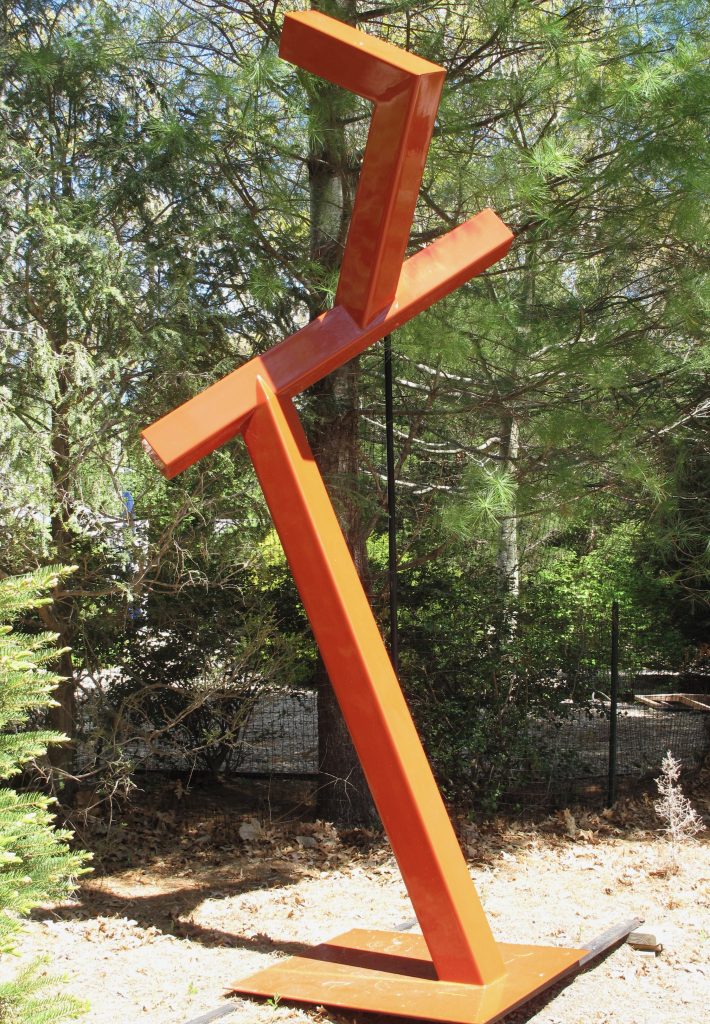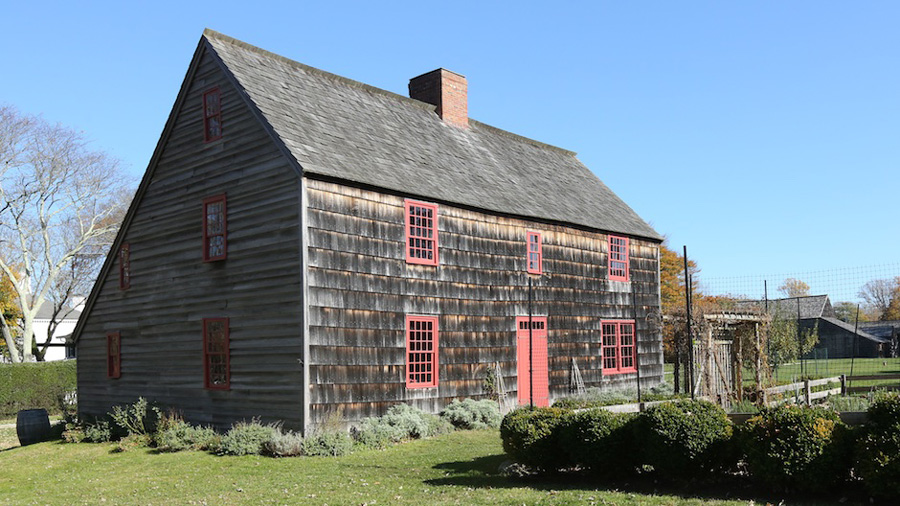
Wednesday, May 13
You see it at every time of year on the East End, particularly in our East Hampton neighborhood of Springs: ART.
Situated in driveways or front yards, there are a lot of metal sculptures, often painted a first responder orange or some other eye-catching hue. There are beach-ball size metal spheres, metal-beam uprights, even an abstract cut-out that in some Marcel Duchampesque world is said to resemble a deer. There are frequent shows of local artists’ work at the former schoolhouse that’s now an exhibition and lecture space known as Ashawagh Hall.
This past weekend, 52 artists from Hampton Bays to Montauk staged an exhibition on their porches and lawns, “Drive-by-Art (Public Art in This Moment of Social Distancing).” One artist’s contribution consisted of steel-wool octopuses positioned in her hedgerow. Another offered canvas-wrapped posts set six feet apart along her lawn. Art-world shock jock and Whitney museum fave Eric Fischl provided life-size sculptures of dancing nymphs at his Sag Harbor home. All of the works were meant to be admired by art lovers who were socially distanced from each other inside their vehicles.
Ever since the late 19th century, artists have been coming out to the East End, drawn by the light, the isolation, and the presence of wealthy buyers. Portraitist and landscape painter William Merritt Chase followed his rich friends out in the 1890s, setting up a studio and a school near Southampton. Belmonts, Carnegies, Astors, and Vanderbilts helped defray his costs.
The successful impressionist painter Childe Hassam purchased an East Hampton house in 1919, joined the Maidstone Club, and tooled about in a chauffeur-driven limo.
More famous today are the abstract expressionists who began arriving some twenty-five years later. These folks experienced the same lures as previous artists—plus that of the then-cheap real estate. Jackson Pollock and Lee Krasner lived in Springs from 1945 until Pollock died drunk in a car crash along Fireplace Road in 1956. Pollock created his anarchic, improvisational drip paintings both on a concrete slab in the yard behind the couple’s farmhouse and also in a nearby barn. Today, the house is the Pollock-Krasner House and Study Center, administered by Stony Brook University. You can visit the place, wander through the small cottage, and even enter the barn, where the floor is considered such a work of art that visitors must don protective rubber shoes.
Krasner produced widely varying work—including abstract art, collage, and postmodern pieces—into the 1970s. She died in 1984 at age 75.
Willem de Kooning also lived in Springs, not far from Pollock/Krasner starting in 1961. He, too, is remembered as an abstract expressionist, but on the East End, he developed a new style, erotic and lyrical. He built a large, industrial-style studio across from the Green River Cemetery. And his work was the subject of a series of major shows in New York and Europe.
By the late 1980s, De Kooning was still painting but suffering from advanced Alzheimer’s disease. He died in 1997, at 92 years of age.
Other creative people also lived nearby in Springs, including New Yorker writer A.J. Liebling and his wife, novelist and Pulitzer Prize-winning short story writer Jean Stafford. The very funny Liebling is one of my favorite writers, and his New Yorker “press clips” columns offer an indelible look at 20th century American journalism.
Enough with the local history.
I’ve fallen into this subject as, like everyone else, I have so little to do these days. You wake up, read the paper, have a small lunch, take a walk, and then it’s time to make dinner and watch videos. The weeks scamper by—we’ve been out here for almost ten weeks now and it’s hard to ever imagine a return to NYC.
Dinner: leftover lentil soup, and salad.
Entertainment: More episodes of Bordertown.

